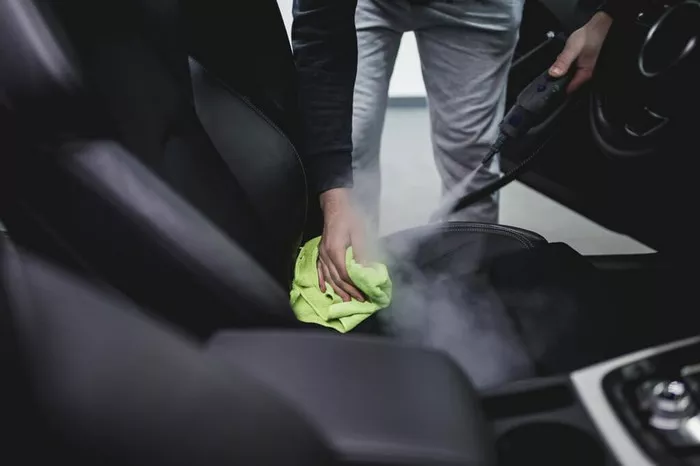Steam cleaning has emerged as an effective method for maintaining the cleanliness and hygiene of various surfaces, including car interiors. When it comes to car vents, steam cleaning offers several advantages over traditional cleaning methods. Not only does it effectively remove dirt and grime, but it also sanitizes the vents, eliminating harmful bacteria and allergens. Additionally, steam cleaning eliminates odors without the need for harsh chemicals, making it a safe and eco-friendly option for car owners.
Safety Precautions
Before embarking on the steam cleaning process, it’s essential to prioritize safety. This includes wearing protective gear such as gloves to shield hands from hot steam and avoiding contact with electrical components within the car’s ventilation system. Furthermore, ensure the steam cleaner is used in a well-ventilated area to prevent the buildup of steam and condensation.
Step-by-Step Guide
Preparation
1. Vacuuming: Begin by thoroughly vacuuming the interior of the car, paying particular attention to the area surrounding the vents. This helps remove loose debris and ensures a more effective steam cleaning process.
Steam Cleaning Process
2. Preparation of Steam Cleaner: Fill the steam cleaner’s reservoir with water according to the manufacturer’s instructions and allow it to heat up.
3. Handling the Steamer: Once the steam cleaner is ready, hold it a few inches away from the car vent and depress the steam trigger.
4. Choosing Attachments: Select a nozzle or attachment suitable for accessing the vents. A narrow nozzle or brush attachment works well for this purpose.
5. Applying Steam: Direct the steam into the vent openings, moving the nozzle back and forth to ensure thorough coverage. Hold the steam over each vent for several seconds to allow it to penetrate and loosen dirt and grime.
6. Repeat Process: Continue this process for each vent in the car, adjusting the steam intensity as needed for stubborn stains or buildup.
Post-Cleaning
7. Wiping Away Condensation: After steam cleaning, use a clean microfiber cloth to wipe away any condensation that may have accumulated on the surface of the vents.
8. Drying Vents: To expedite the drying process, turn on the car’s ventilation system and allow air to circulate through the vents.
Recommended Tools
When selecting a steam cleaner for car vent cleaning, it’s important to choose a model that is user-friendly and effective. For experienced users, the VX 5000 steamer offers powerful steam and versatile attachments for tackling various cleaning tasks. Beginners may find the McCulloch MC1275 to be a suitable option, thanks to its easy-to-use design and affordable price point.
Maintenance Tips
To maintain the cleanliness of car vents and prevent the buildup of dirt and bacteria, consider the following maintenance tips:
1. Change Cabin Air Filter: Regularly replace the cabin air filter to ensure optimal air quality within the vehicle.
2. Use Sanitizing Sprays: Periodically use sanitizing sprays designed for car interiors to disinfect vents and surfaces.
Troubleshooting
Common issues that may arise during steam cleaning of car vents include:
1. Water Leakage: If water leaks from the steam cleaner, check the seals and connections for any damage or looseness.
2. Ineffective Cleaning: If the vents are not thoroughly cleaned, try increasing the steam intensity or using a different attachment for better access.
FAQs
Q1: Can I use any steam cleaner for cleaning car vents?
A1: While many steam cleaners are suitable for car vent cleaning, it’s essential to choose one with the appropriate attachments and steam intensity for the task.
Q2: How often should I steam clean my car vents?
A2: It’s recommended to steam clean car vents at least once every few months to maintain cleanliness and prevent the buildup of dirt and bacteria.
Q3: Is steam cleaning safe for all types of car vents?
A3: Steam cleaning is generally safe for most types of car vents, including plastic and metal. However, it’s advisable to check the manufacturer’s guidelines for any specific recommendations or restrictions.

